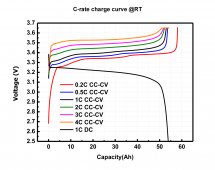New post:
Warning: This cheap charge controller feeds back over 90V to solar input after charge stop. This high volt feedback voltage destroyed one of my bench power supplies. I guess after charge stop the capacitors inside discharge!? Neither the battery (used a 12 volt one) nor my now destroyed power supply (up to 24volts only) was able to produce 90+volts so it definitely comes from the charge controller.
Also the efficiency of it was not as advertised. Further the readings of those meters are off quite a bit. Better stay away from this controller.
Old post:
Hi
I just found these super efficient (97 to 98%!! in real life as seen in three different YouTube videos) but still affordable (200W to 400W for just around 30usd) charge controllers, the Elejoy EL-MD series.
Wanted to ask if anyone has one of those elejoy charge controllers? What is your experience?
How high is their self consumption? Can you second the incredible efficiency of up to 98%!?
Warning: This cheap charge controller feeds back over 90V to solar input after charge stop. This high volt feedback voltage destroyed one of my bench power supplies. I guess after charge stop the capacitors inside discharge!? Neither the battery (used a 12 volt one) nor my now destroyed power supply (up to 24volts only) was able to produce 90+volts so it definitely comes from the charge controller.
Also the efficiency of it was not as advertised. Further the readings of those meters are off quite a bit. Better stay away from this controller.
Old post:
Hi
I just found these super efficient (97 to 98%!! in real life as seen in three different YouTube videos) but still affordable (200W to 400W for just around 30usd) charge controllers, the Elejoy EL-MD series.
Wanted to ask if anyone has one of those elejoy charge controllers? What is your experience?
How high is their self consumption? Can you second the incredible efficiency of up to 98%!?
Last edited:





